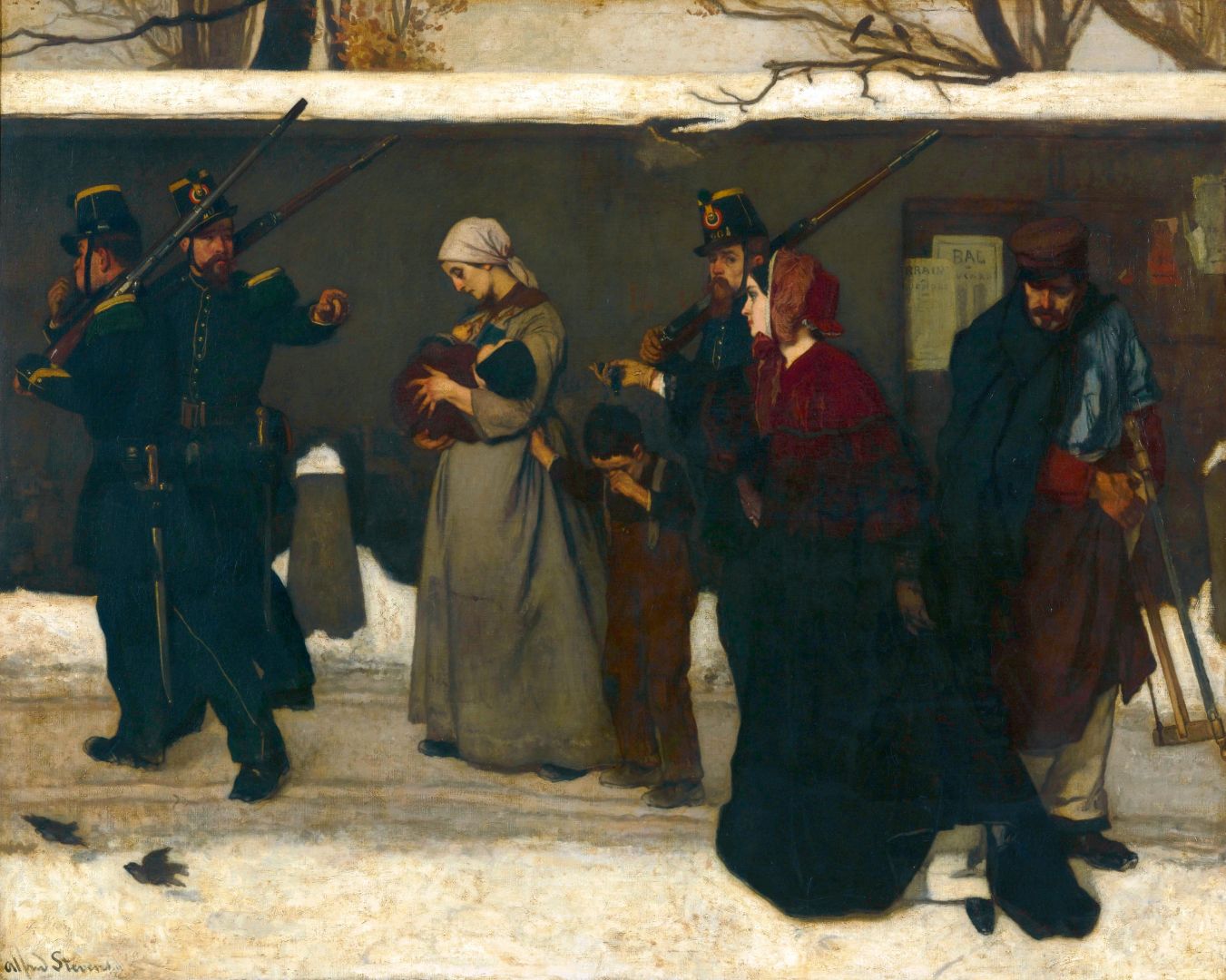Birth of a Legend: First Successes - 5
WHAT IS CALLED VAGRANCY
Alfred STEVENS
(1823–1906)
WHAT IS CALLED VAGRANCY
1854
Oil on canvas
Musée d’Orsay, Paris
Inv. no. 20847
What is Called Vagrancy by the Belgian artist Alfred Stevens is a thematic and visual forebear of Munkácsy’s work. The painting was in private ownership in Munkácsy’s day, although it was already being disseminated in the form of a print. Munkácsy may thus have been familiar with the composition, even if he had not seen the actual painting. Stevens’s painting also shows soldiers taking people to prison for vagrancy, although in his work, the “tramp” is a destitute mother with a baby in her arms and a child at her side. The Belgian artist creates a sense of social contrast by means of the well-to-do woman who attempts to help the mother, while a working man turns away in resignation. In both paintings, the composition is based on the collision between the different social groups living alongside one another in the city, together with the oppressive role of the state. Both works have an overtone of social criticism: they express condemnation of the poverty in the cities and of the inhuman treatment of the destitute.
